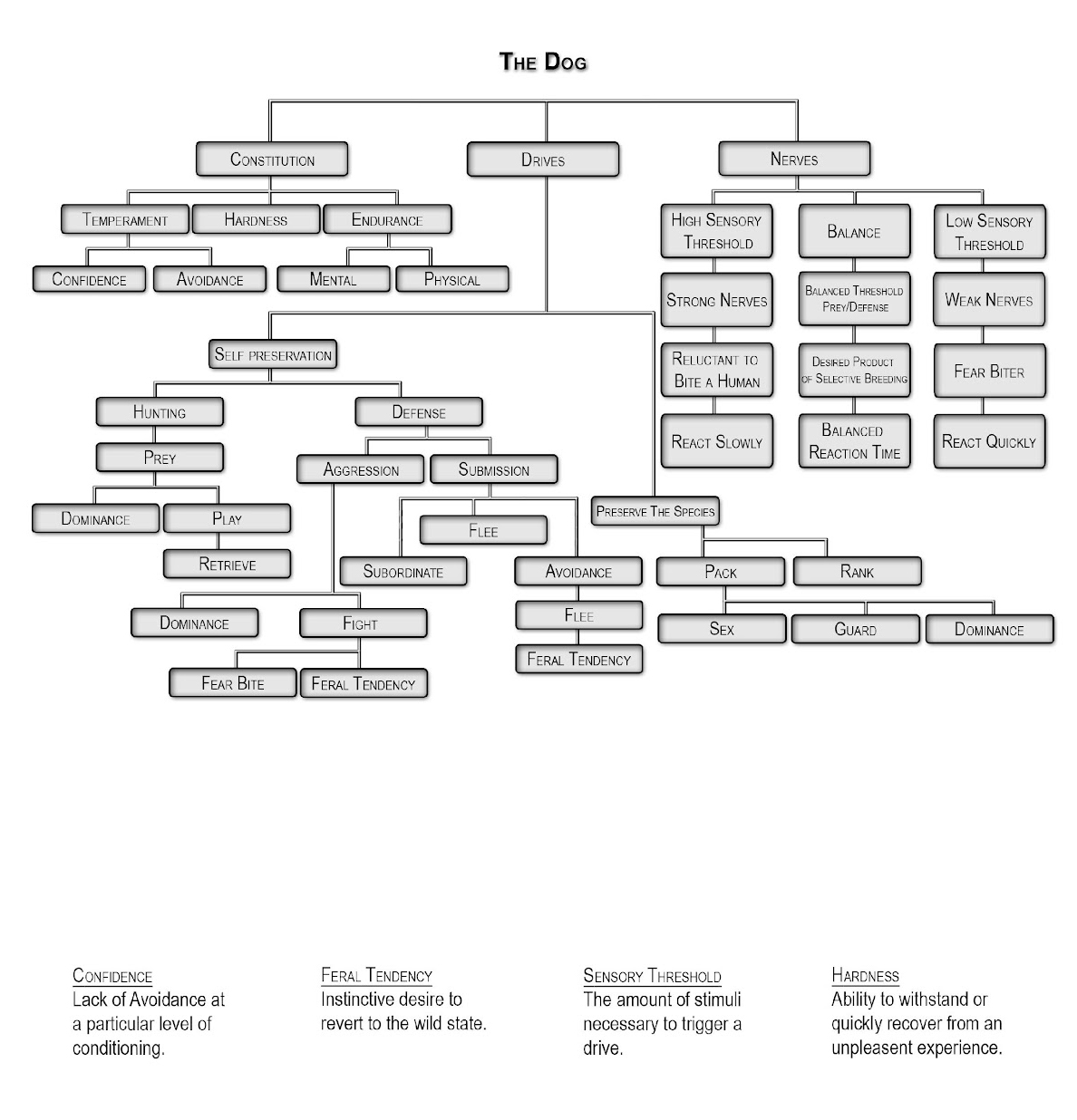Copy of Shelter Dog Training - Complete Course
-
Section 1: OVERVIEW & FUNDAMENTALS
Welcome Lectures16 Video Topics-
Course Agreement & Course Manual
-
Introduction & Mission Statement
-
The Genetic Makeup of the Dog
-
Pet Dogs vs Shelter Dogs
-
Why Dogs End Up in Shelters
-
Understanding Breeds
-
Shelter Mix Breakdown
-
Mitigating Injuries
-
Blueprint of Dog Drives
-
Using Treats / Food As a Reward
-
Engagement Training
-
Training Methods
-
Canine Body Language
-
Spatial Pressure
-
Correction vs Punishment Intro
-
Understanding Playgroup Basics
-
Course Agreement & Course Manual
-
Section 2: Introduction / TheoryCommunicating with Dogs1 Video Topic
-
Understanding the Genetic Makeup of the Dog1 Video Topic
-
What Makes Shelter Dogs Different2 Video Topics
-
The Anatomy of a Dog1 Quiz
-
Section 3: GETTING STARTEDThe Various Groups / Breeds of Dogs4 Video Topics
-
The Shelter Mix Breakdown1 Video Topic
-
The Blueprint of the Dog1 Video Topic
-
Anthropomorphism1 Video Topic|1 Quiz
-
Section 4: SafetyMitigating Injuries2 Video Topics
-
Canine Body Language1 Video Topic
-
Spatial Pressure1 Video Topic
-
Radius of Temperament1 Video Topic|1 Quiz
-
Section 5: The BASICS OF TRAININGBonding Through Training2 Video Topics
-
Luring and Shaping Behaviors5 Video Topics
-
Engagement Training4 Video Topics
-
Using Food as a Reward1 Video Topic
-
Different Training Methods1 Video Topic|1 Quiz
-
Section 6: UNDERSTANDING DOGS THROUGH TRAININGEngagement Training Continued5 Video Topics
-
Recall Training5 Video Topics
-
Corrections vs Punishment1 Video Topic
-
Long Line Training5 Video Topics|1 Quiz
-
SECTION 7: USING THE LEASH & LONG LINEHow to Use a Leash7 Video Topics
-
Long Line Training - Part 26 Video Topics|1 Quiz
-
Section 8: HOW TRAINING SAVES LIVESThe Canine Good Citizen5 Video Topics
-
Basic Obedience4 Video Topics
-
Teaching the Leave It Command4 Video Topics
-
The Place Command3 Video Topics|1 Quiz
-
Section 9: Building ConfidenceBuilding Confidence3 Video Topics
-
Touch Sensitivity1 Video Topic
-
Fear Aggression1 Video Topic
-
Progressive Desensitization1 Video Topic|1 Quiz
-
Section 10: Getting Dogs Around other DogsDog to Dog Introductions10 Video Topics
-
Leash Dropping1 Video Topic|1 Quiz
-
Section 11: Playgroup TrainingWhat is a Structured and Managed Playgroup2 Video Topics
-
Beginning and Structuring a Playgroup4 Video Topics
-
What Makes Playgrounds Safe vs Dangerous3 Video Topics
-
How Playgroups Benefit Dogs in Shelters2 Video Topics|1 Quiz
-
Section 12: Behavior ObservationsUnderstanding What You See5 Video Topics
-
Defining Behaviors3 Video Topics
-
Reading Dogs3 Video Topics|1 Quiz
-
SECTION 13: PROBLEM SOLVINGHigh Drive Dogs2 Video Topics
-
Mouthy Dogs1 Video Topic
-
Barrier Aggression Examples4 Video Topics
-
Fear Issues3 Video Topics
-
Leash Biting2 Video Topics|1 Quiz
-
SECTION 14: CORRECTIONS IN DOG TRAINING - Part 1Corrections Save Lives6 Video Topics|1 Quiz
-
Section 15: Corrections in Dog Training - Part 2The Proper Use of Corrections7 Video Topics|1 Quiz
Groups
-
active 8 hours ago
-
active 20 hours ago
-
active 20 hours ago
-
Member Forum
Latest updates

Andrew posted an update 2 days ago

Lamprini posted an update 3 days ago

Robert posted an update 3 days ago

Tommy posted an update 3 days ago

Tommy posted an update 4 days ago

Shawn posted an update 5 days ago

Liz posted an update 5 days ago

Tommy posted an update a week ago
Blueprint of Dog Drives
Drives are the unconscious, biological impulses that carry out important vital functions. They display in a physical manifestation of the dog’s personality and energy. How a dog sees and reacts to things, such as food, physical presence of other people or dogs, things that move, etc. all fall under the “drive” category.
Although often inherent, these drives can be compounded by environment with good or bad handling techniques.
It is important to recognize drive traits in order to control & develop or inhibit the manifestations of dangerous or undesirable ones. You cannot properly train or understand a dog without understanding the drives that make him that dog. Without the drives, the dog is merely a stuffed animal that barks and moves.
For those who want to label all dogs as dogs and not see dogs as multi-faceted in their various groups and breeds, I issue a warning. Although all dogs share most of their DNA with wolves as well as with each of the various breeds, the characteristics of drives throughout the various breeds can make their personalities (inside) as different as their looks (outside) very distinguished. How we deal with different drives can make or break the dog. It is our responsibility to strive to understand what makes a dog and his or her behavior; most of this is based on the drives of the dog.
Different breeds of dogs have different triggers, drives and temperaments. However, you may find a high drive dog within a breed that is generally known for low drive and visa vis.
For the most part, a specific range of drives can be classified within the specific groups of dogs. We can assume most dogs of the working dog group have a similar drive for work, tenacity, temperament; herding breeds would share a set of characteristics and drives, etc. There’s always the odd man out, but we want to focus on defining drives as they appear in each dog, breed and group and work with the dog based on his or her individual drives.


